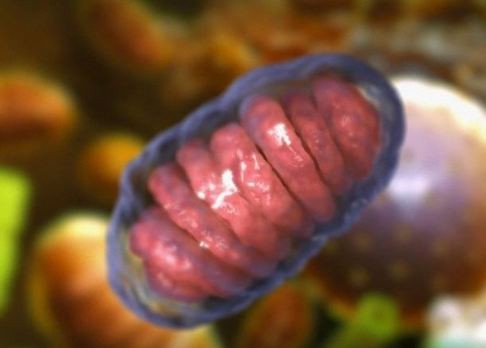
It’s life, but not as we know it: Chatty cells found to be using ‘quantum communication’, which could reverse the ageing process

Chinese scientists have observed “quantum communication” inside a living cell, potentially an important step forward in finding ways to reverse the ageing process.
Quantum communication is defined as the art of transferring a quantum state from one place to another.
Before making fateful decisions, such as whether or not to rejuvenate, major components in a cell may use sudden, unpredictable “flashes” to facilitate lively discussion until a consensus is reached, according to the new study.
“We believe there is some kind of dialogue [going on inside cells] … like the ‘mews’ of Schrodinger’s Cat,” said Professor Liu Xingguo, lead scientist of the study.
He was referring to a thought experiment by Austrian physicist Erwin Schrödinger in 1935 that relates to theories of quantum mechanics.
It presents the scenario of a cat placed in a sealed box with a radioactive sample, a Geiger counter and some poison. Various readings show the cat to be dead and alive at the same time. Similarly, the cells were found to be pinging messages about whether to continue living or die.
Liu works with the Chinese Academy of Sciences’ Guangzhou Institute of Biomedicine and Health in southern China’s Guangdong province. His team’s paper was recently published in the journal Cell Metabolism.
“We will never precisely predict when and where the next flash will occur,” he said.
“We can only estimate the probability [of this],” he added.
“But we have various methods to increase or decrease the probability, and by doing so we may be able to solve some fundamental issues in life, such as those relating to ageing or fetal diseases.”
The discovery challenges the commonly held belief that life is a smooth, continuous, one-way process.
Ageing, according to some recent studies, might proceed like a movie, made up of a series of
independent, sporadic frames that run from the birth to death of a life form. And, just like a film, the process can either be made to “fast forward” or “rewind” if the right button is pressed.
The method used to break the seemingly continuous process of life into relatively small discrete sets is known as quantization. It has provided biologists with a tool to understand the molecular mechanisms at work in the process of ageing.
Liu’s team observed so-called “quantized” flashes in a cell - taken from a mature body - that was being reversed back to a stem cell through a process triggered by chemicals. Stem cells are undifferentiated, primitive cells that can produce various kinds of cells by virtue of differentiation.
Through this process, researchers were able to use the primordial stem cell to culture new liver or even brain cells to replaced damaged organs.
The team lit up various components in the cell using a florescent material. They found that if more “flashes” occurred during the process of reversion, it was easier and more likely that a body cell could return to this more primitive state.
“In other words, the flashes help reverse the ageing process,” Liu said.
The flashes were produced by mitochondria, or thread-like components in a cell that generate energy to sustain all cellular activity.
They found that each “mitoflash” lasted for about 10 seconds and were visible if seen through a microscope. Immediately afterwards they disappeared quickly as if nothing had occurred.
The scientists believe the “flashes” were produced by free radicals like superoxide particles as they are released from the energy-generating mitochondria, but questions remain as to why.
This issue has drawn enormous interest among the scientific research community in recent years.
Mitochondria are closely related to the ageing process as they are the only major component in a cell that cannot self-heal to help repair damage to the DNA.
As genetic damage builds up in the mitochondria, the cell perishes and eventually so will its host organism.
In a study conducted by another team of Chinese scientists last year, “mitoflashes” were found to indicate the lifespan of a worm. The more such flashes occurred, the faster the worm died.
Liu said the findings of the more recent study did not contradict the earlier paper.
“Increasing the number of flashes may help reverse the ageing process for a single cell, but it may accelerate the death of the life form as a whole,” he said.
“The fate of a single cell is not the same as the fate of a life form,” he added.
“The mitochondria may use the flashes to communicate with the nucleus, and together they could decide the fate of the cell.”
Cheng Heping first discovered mitochondrial flashes in 2008. Cheng, a professor at the Institute of Molecular Medicine at Peking University in Beijing, said the work by Liu’s team has contributed to the broader understanding of this intriguing phenomenon.
“It shows us there were flashes even at the earliest stage of life,” he said.
“This discovery will help us get a more complete picture of what is going on at the fundamental level of life.”
But Cheng said the quantized mitoflashes were different from the qubits - quantum bits, or units of quantum information - usually seen in quantum communication.
“The quantization in biology is different from that in quantum physics,” he said.
“There is nothing like spin or entanglement in a cell, just some random, 10-second-long pulses as free radicals burst out [of the mitochondrion],” he added.
“As far as our observation goes, life cannot be explained by quantum mechanics yet.”
The exact role and function of the flashes requires further investigation, he said.
“The mitoflashes provide us a visible tool to study life, but they also reveal more uncharted territory,” he added.